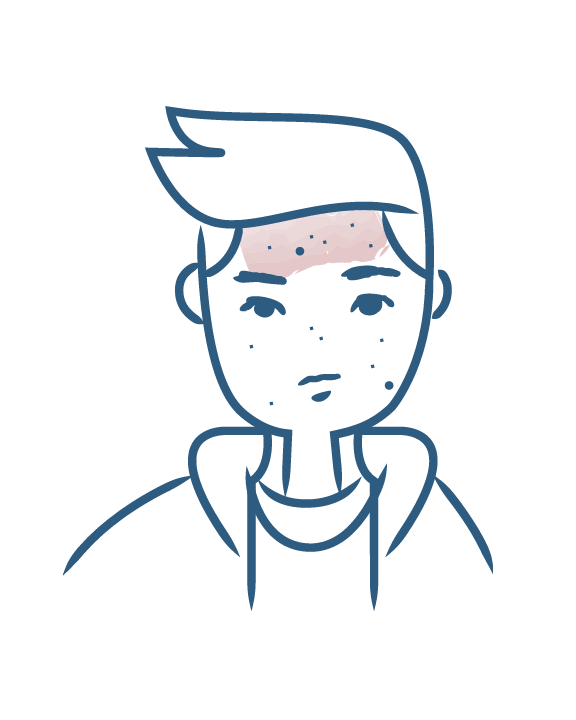
Acne symptoms
Acne symptoms are well known: oily, shiny skin, dilated pores and spots. Spots may be small, large, blackheads, whiteheads, or red spots, and they can vary in depth and degrees of painfulness. Acne spots are often highly visible, and you'll want to get rid of them at all costs!
"My acne spots differ a lot."
Acne is a disease of the pilosebaceous follicle. Abnormalities present at the heart of this skin structure lead to the appearance of various acne symptoms, particularly acne spots. The accumulation of sebum and cellular debris clogs the pores and causes the appearance of comedones. Open comedones are called blackheads while closed comedones are called whiteheads, due to the color of the substance they contain.
Comedones are very unsightly and leave the skin looking grainy. Red spots develop from comedones or directly from the build-up of bacteria known as Cutibacterium acnes. Red spots are considered to be papules when they are less than 5 mm in size, pustules when they are topped by a white tip filled with pus, and finally nodules when they are more than 5 mm in size and are found deep in the skin.
"My face is covered in acne spots."
The face is almost always affected in cases of acne, as it is an area full of pilosebaceous follicles, particularly the T-zone (forehead, nose and chin). Facial acne can have a major, often negative impact on daily life because acne symptoms are clearly visible, sometimes affecting relationships with others.
"I’ve had enough of my back acne!"
Back acne concerns both teenagers and adults. It is sometimes severe, especially in boys and men. Acne symptoms are less visible on the back than on the face, but they are still bothersome, for example during sports sessions, at the beach or even in the privacy of your own home.
"I have acne spots all over my forehead and/or chin."
The T-zone of the face includes the forehead, nose and chin. In the event of acne, the T-zone is most often affected by hyperseborrhea, hyperkeratinization and inflammation, i.e. the three acne components. Forehead acne is very common, as is chin acne. People with spots on their forehead or chin often feel very uncomfortable, and have the impression that other people are staring at their spots when they look at them. This type of acne can have a major psychological impact. You shouldn’t panic, however, as solutions exist to fight acne spots in the T-zone.
"I have acne scars."
Scars are the most dreaded consequence of acne, because they are sometimes more visible than acne spots and are often permanent. They are an acne symptom in their own right. Acne scars affect all patients, both those with severe acne and also those with milder forms of the condition. Touching spots and trying to pierce them to make them disappear faster increases the risk of scars.
"How do you tell the difference between acne and rosacea?"
Rosacea, especially in its papulopustular form, can mimic some acne symptoms. If in doubt, it is best to see a doctor. They can provide an accurate acne or rosacea diagnosis, offering the right treatment.
Our care routines
Oily or acne-prone skin
- Discover Anti-blemish face care summer routine for adult skin
Anti-blemish face care summer routine for adult skin
Dermatological expertise
To better understand your skin and hair, discover our exclusive content and innovative care products designed to improve your quality of life..

